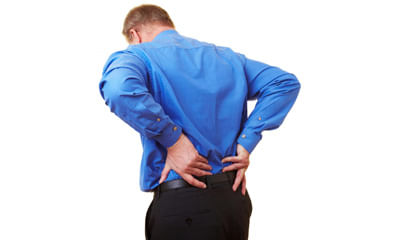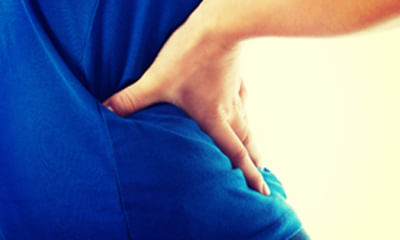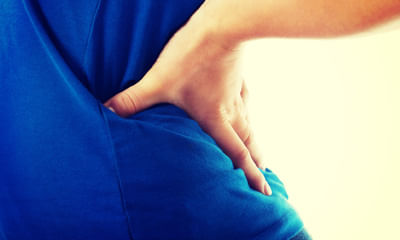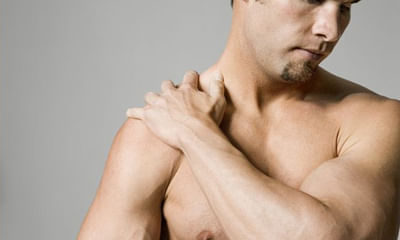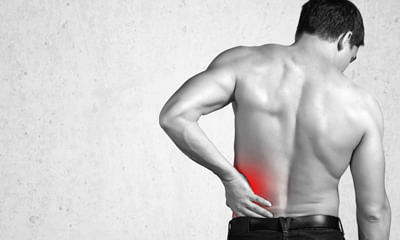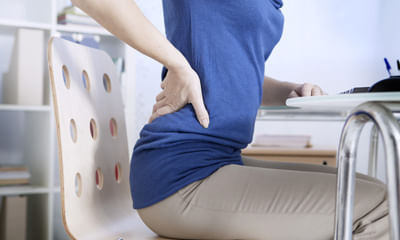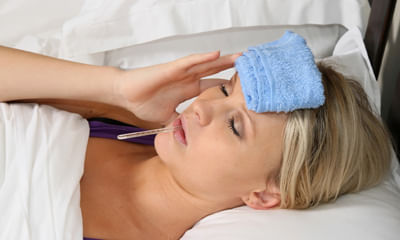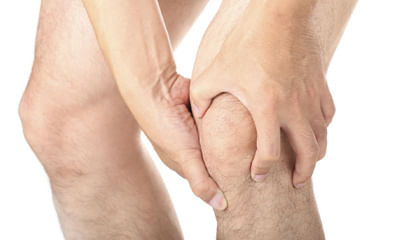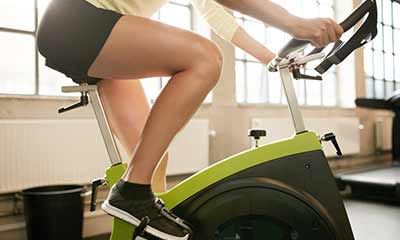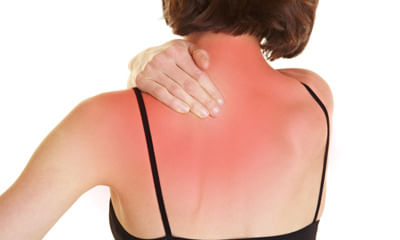Severe Pain In Tail Bone
From 15 march after a massage session in salon I started feeling in pain in right side upper back. Same kind of pain was ...
Ask Free Question
It looks like a muscle pain kindly do the exercise regularly. Bad posture can contribute to the severity and appearance of pectusexcavatum. Strengthening your postural muscles can help. Because we often work on our front body — especially when strengthening our chest to help with pectusexcavatum — this exercise will help balance your body by strengthening your posterior chain — those muscles on the back of the body. 1.Lie on your stomach on a mat with your arms extended in front of you and your forehead resting on the ground. 2.As you inhale, lift your head, legs, and arms. 3.Hold for a count of 5 and gently release back to the ground. 4.Complete 2 sets of 10. The great thing about this exercise is that it can be done at work — in a regular chair with no weights. Or it can be made more difficult by sitting on an exercise ball and using weights. You’ll feel this in your upper back and obliques. It’ll also work your core and your pecs, especially if you use weights. 1.Sit up straight and engage your core. Extend your arms out in front of you. If you’re using a weight, hold it with both hands, either wrapping 1 hand over the other or stacking them on the weight. 2.Inhale and as you exhale, twist to the right. 3.Count slowly to 5, and then move with your breath. You’ll twist when you exhale and sit up taller or untwist when you inhale. Bow pose stretching is also a vital component to treating pectusexcavatum. Yoga chest openers will help to expand the chest while also promoting deep breathing. Try bow pose to start. 1.Lie on your stomach on a mat with your arms at your sides, palms facing up. 2.Bend your knees and bring your feet to your backside, grabbing your ankles with your hands. 3.Inhale and lift your thighs away from the floor, pressing your shoulder blades back to open your chest. Your gaze should be forward. Maintain the pose for at least 15 seconds, ensuring that you continue to breath. Complete 2 rounds. Read on to learn how to do 12 exercises that’ll help you stand a little taller. Camel pose another chest-opening yoga pose, camel gives you a deep stretch through the entire upper body. This will be difficult for beginners — if you can’t achieve the full pose, lean back with your hands on the back of your pelvis, feeling the stretch there. 1.Kneel on the floor with your shins and the tops of your feet pressed into the ground. Place your hands on the back of your pelvis. 2.Keeping your thighs perpendicular to the ground and pushing against your tail bone, lean back, aiming to drop your hands to your heels. Drop your head back. 3.Maintain the pose for at least 15 seconds. Hold the stretch for 5-10 seconds, then return to the start position. Repeat on your left side. You can do several sets and work your way up to 10 repetitions. For extra stretch, put the hand on the same side of your tilted head on top of your head, and press lightly with your fingertips. Side rotation you can do this while seated or standing. Keep your head squarely over your shoulders and your back straight. Slowly turn your head to the right until you feel a stretch in the side of your neck and shoulder. Hold the stretch for 15-30 seconds, and then slowly turn your head forward again. Repeat on your left side. Do up to 10 sets. Press your palm against your forehead. Resist with your neck muscles. Hold for 10 seconds. Relax. Repeat 5 times. Do the exercise again, pressing on the sides (both the sides (right & left side) of your head. Repeat 5 times. Switch sides. Do the exercise again, pressing on the back of your head. Repeat 5 times.
I'm suffering from coccydynia from one year, sometimes pain get severe while driving 2 wheeler on speed breaker and rece ...
Ask Free Question
The lower end of the vertebral column is inflamed and that bone is called coccyx bone and the condition is called coccydynia. The conservative management would be to keep ice in that inflamed area during one time in a day and also to sit in a hot water bowl where the penetration of the heat would help to reduce the inflammation. And to reduce the weight falling on the inflammed surface we suggest patients to use air cushion pillow (also called as doughnut pillow) where in the buttock's weight will not fall exactly on the painful tail bone and that would automatically reduce the pain.
Hi thirteen years back I met with an accident and at that time I have no back pain after delivery I am having severe bac ...
Ask Free Question
Regards Lybrate user. Low back pain are known to be mostly non specific and may need detailed evaluation to find the factors contributing to the pain. In your query, you had mentioned there was a fracture. Can you provide any further information if it is a recent fracture or if it had happened a while back. Usually fractures heal by themselves if undisturbed and only occasionally they may not heal leading to chronic pains. In your query, you had mentioned "after delivery" so with the given information, the pain may occur secondary to changes happening in the body to accommodate the baby, stresses on the joints and muscles of pelvis (waist) or back or hip. It is recommended to consult an orthopaedic physiotherapist who could evaluate your status and suggest appropriate management. Please feel free to reach out to us for a virtual consult.
I feel a severe pain in my tail bone from one week I have problems in sitting for a long time. ...
Ask Free Question
The lower end of the vertebral column is inflamed and that bone is called coccyx bone and the condition is called coccydynia. The conservative management would be to keep ice in that inflamed area during one time in a day and also to sit in a hot water bowl where the penetration of the heat would help to reduce the inflammation. And to reduce the weight falling on the inflammed surface we suggest patients to use air cushion pillow (also called as doughnut pillow) where in the buttock's weight will not fall exactly on the painful tail bone and that would automatically reduce the pain.
I have severe low back that radiates through legs. Can't even stand or sit for 5 min. Since I have 8 month baby it's rea ...
Ask Free Question
It can be because of sciatica. Do these exercises to relieve sciatica pain url/health/back-pain/sciatic-stretches#sitting-pigeon-pose 1. Reclining pigeon pose— pigeon pose is a common yoga pose. It works to open the hips. There are multiple versions of this stretch. The first is a starting version known as the reclining pigeon pose. If you are just starting your treatment, you should try the reclining pose first. While on your back, bring your right leg up to a right angle. Clasp both hands behind the thigh, locking your fingers. Lift your left leg and place your right ankle on top of the left knee. Hold the position for a moment. This helps stretch the tiny piriformis muscle, which sometimes becomes inflamed and presses against the sciatic nerve, causing pain. Do the same exercise with the other leg. Once you can do the reclining version without pain, work with your physical therapist on the sitting and forward versions of pigeon pose. 2. Sitting pigeon pose— sit on the floor with your legs stretched out straight in front of you. Bend your right leg, putting your right ankle on top of the left knee. Lean forward and allow your upper body to reach toward your thigh. Hold for 15 to 30 seconds. This stretches the glutes and lower back. Repeat on the other side.3. Forward pigeon pose— kneel on the floor on all fours. Pick up your right leg and move it forward on the ground in front of your body. Your lower leg should be on the ground, horizontal to the body. Your right foot should be in front of your right knee while your right knee stays to the right. Stretch the left leg out all the way behind you on the floor, with the top of the foot on the ground and toes pointing back. Shift your body weight gradually from your arms to your legs so that your legs are supporting your weight. Sit up straight with your hands on either side of your legs. Take a deep breath. While exhaling, lean your upper body forward over your front leg. Support your weight with your arms as much as possible. Repeat on the other side. 4. Knee to opposite shoulder— this simple stretch helps relieve sciatica pain by loosening your gluteal and piriformis muscles, which can become inflamed and press against the sciatic nerve. Lie on your back with your legs extended and your feet flexed upward. Bend your right leg and clasp your hands around the knee. Gently pull your right leg across your body toward your left shoulder. Hold it there for 30 seconds. Remember to pull your knee only as far as it will comfortably go. You should feel a relieving stretch in your muscle, not pain. Push your knee so your leg returns to its starting position. Repeat for a total of 3 reps, and then switch legs. 5. Sitting spinal stretch— sciatica pain is triggered when vertebrae in the spine compress. This stretch helps create space in the spine to relieve pressure on the sciatic nerve. Sit on the ground with your legs extended straight out with your feet flexed upward. Bend your right knee and place your foot flat on the floor on the outside of your opposite knee. Place your left elbow on the outside of your right knee to help you gently turn your body toward the right. Hold for 30 seconds and repeat three times, then switch sides. 6. Standing hamstring stretch— this stretch can help ease pain and tightness in the hamstring caused by sciatica. Place your right foot on an elevated surface at or below your hip level. This could be a chair, ottoman, or step on a staircase. Flex your foot so your toes and leg are straight. If your knee tends to hyperextend, keep a slight bend in it. Bend your body forward slightly toward your foot. The further you go, the deeper the stretch. Do not push so far that you feel pain. Release the hip of your raised leg downward as opposed to lifting it up. If you need help easing your hip down, loop a yoga strap or long exercise band over your right thigh and under your left foot. Hold for at least 30 seconds, and then repeat on the other side. For this homeopathic treatment is very effective for more details you can consult me.
I am 28 years female and I am suffering from back pain should I plan for pregnancy? Please help me. ...
Ask Free Question
Because your kidneys are located toward your back and underneath your ribcage, it may be hard to tell if the pain you’re experiencing in that area is coming from your back or your kidney. The symptoms you’re having can help you figure out which is the source of the pain. The location, type, and severity of the pain are some of the things that will be different depending on whether the pain is from a problem in your kidneys or your back. How to identify kidney painkidney pain is most often caused by a kidney infection or a stone in the tubes coming out of your kidney. If the pain is coming from your kidney, it will have these features: where the pain is located kidney pain is felt in your flank, which is the area on either side of your spine between the bottom of your ribcage and your hips. It usually occurs in one side of your body, but it can occur in both sides. Type of pain kidney pain is usually sharp if you have a kidney stone and a dull ache if you have an infection. Most often it will be constant. It won’t get worse with movement or go away by itself without treatment. If you’re passing a kidney stone, the pain may fluctuate as the stone moves. Radiation of the pain sometimes the pain spreads (radiates) to your inner thigh or lower abdomen. Severity of the pain kidney pain is classified according to how bad it is — severe or mild. A kidney stone usually causes severe pain, and the pain from an infection is usually mild. Things that make it better or worse typically, nothing makes the pain better until the problem is corrected, such as by passing the stone. Unlike back pain, it usually won’t change with movement. Accompanying symptoms if you have a kidney infection or a kidney stone, you may also experience: •fever and chills •nausea and vomiting •cloudy or dark urine •an urgent need to urinate •pain when you urinate •a recent infection in your bladder •blood in your urine (this can happen with an infection or kidney stones) •small kidney stones that look like gravel in your urine how to identify back pain back pain is more common than kidney pain and is usually caused by a problem in the muscles, bones, or nerves in your back. Has the following features: where the pain is located back pain can occur anywhere on your back, but it’s most commonly located in your lower back or one of your buttocks. Type of pain muscle pain feels like a dull ache. If a nerve has been injured or irritated, the pain is a sharp burning sensation that may travel down your buttock to your lower leg or even your foot. Muscle pain may affect one or both sides, but nerve pain usually only affects one side. Radiation of the pain nerve pain may spread to your lower leg. Pain from a muscle usually stays in the back. Severity of the pain back pain is described as acute or chronic based on how long you’ve had it. Acute pain lasts days to weeks, subacute pain lasts six weeks to three months, and chronic pain lasts longer than three months. Things that make it better or worse back pain may get worse with movement or if you sit or stand for a long time. It may get better if you switch positions or walk around. Accompanying symptoms other symptoms you may experience with back pain include: •the painful spot looking swollen and feeling tender to the touch •a muscle spasm in the painful area •numbness or weakness in one or both of your legs (if the pain is due to a nerve issue) if you find you have back pain and can’t hold your urine or bowel movements, something is pressing on your spinal nerves, and you should be evaluated immediately. This condition, called cauda equina syndrome, can cause severe long-term damage to your spinal nerves if not treated right away. 6 imbalances that cause pain—and how to fix them "pain is a medical condition and a medical issue, says brett jones, owner of applied strength in pittsburgh who is certified for the functional movement screen, a system of tests and cor rective exercise strategies. "it's a warning sign. The pain is there to tell you something's wrong. And that warning sign could be more serious than "you're going too hard. Jones and the other coaches consulted for this piece all had a horror story to tell-when pain in a client meant a more serious condition such as a nerve issue, thyroid issue, or even cancer. The point: if you experience regular pain while exercising-or when you're not-go to the doctor. If you've been cleared by a doc and you're still feeling discomfort, try these simple tests to see what's truly causing the pain-it could be related to an imbalance in a completely different part of your body. The good news: with these drills, stretches, and corrective exercises, you may be able to fix them-no doctors necessary. Neck pain and headaches? Could be your shoulders. If you're experiencing these symptoms and have been cleared by a doctor, check out the height of your shoulders, says aaron brooks, a biomechanics expert and owner of perfect postures in auburndale, ma. "look in the mirror and see if one shoulder is higher or lower than the other, he says. If one of your shoulders is higher than the other, you'll be strengthening one more than the other, and it may wind up pulled forward more than the other-resulting an inward rotation of that hand. "when you do a row or a press, that side's going to get pinched. There's less room in the shoulder. You can wind up with bursitis or tendonitis. Or headaches and neck pain. Fix it: if the mirror test shows they're uneven, try this single-arm doorway stretch, brooks says. To do it, stand inside the threshold of a door, and place your right forearm inside the door on the right side of the jamb, palm against the jamb at about shoulder height. In this position, twist your chest slightly through the door to stretch your chest-alternately, you can take a step forward with your right foot, keeping your left foot in the threshold. This stretch will open your chest muscles and create room in your shoulder for movement. Pair that stretch with this mid-back strengthening exercise: grab a resistance band and stretch it in front of your chest so that your arms are straight out to the sides from your shoulders, palms facing up. At the full extension of your arms, the band should be stretched out. Return to clap your hands in front, and repeat the movement. Pair these two moves-in this order-three times per week. Shoulders even? Your headaches could be from a forward-leaning head. If you don't see an imbalance in the height of your shoulders, turn to the side, says robert taylor, owner of smarter team training in baltimore. If your head is jutting far forward of your shoulders, it could ultimately decrease the amount of blood flow to your head and neck. "the head leans forward, the spine leans forward, and it puts unnecessary stress on the lower spine too, he says. With the decreased blood flow to your thinking cap, you could get headaches. Fix it: increase blood flow up top and return your head to its natural, up-tall position by strength training your neck, taylor says. Try this one-arm shrug to even things out: sit on an upright bench, like one you'd use for a shoulder press. Holding a dumbbell in your right hand, place your left hand under your left butt cheek and grab the side of the seat. Let your right hand hang down straight by your side and pull your shoulder blades back and together. Now raise your right shoulder up towards your ear-raise it straight up instead of rolling your shoulder. Hold for a beat at the top, and then return to the start position. Complete a set of 10, and repeat on the other side. Knee pain when you run? Could be your hips. "the knee has two bad neighbors-the hip and the ankle, jones says. The pain you feel in your knee could very well be tightness or immobility in those bad neighbors. "they sweep all their leaves into the knee's yard. Everyone blames the knee, but it's the neighbors. To see if your hips have a proper level of mobility, lay on your back in a doorway so that the middle of your kneecap is right on the threshold. Relax your arms at your sides, palms up. Bring your feet together, toes pointed at the ceiling. Pull your toes towards your shins to create a 90-degree angle at the ankle. Keep one leg straight and still as you slowly raise the other leg until either your knee bends on your raising leg, or your bottom foot bends or turns out to the side. "see if the knobby part of your ankle can make it past the door frame, jones says. If it does, your hips are plenty mobile-check the ankle test below to see if that's causing some knee issues. If either ankle can't make it, foam roll your hips and glutes, and then work on this stretch using a belt or strap for instant improvement. Fix it: lying in the same position as during the test, wrap a strap or belt around one foot and raise it until you just start to feel a stretch-not to the level where it's all the stretch you can take, but just the beginning of the stretch, jones says. Once here, bring your other leg up to meet it. Return the non-strapped leg to the floor. At this point, you may find that the strapped leg can come up a little higher. When it does, bring the non-strapped leg up to meet it again. Continue until you no longer feel progress in the strapped leg, and switch. Hips moving ok? Check your ankles. If your hips are mobile (and even if they're not), ankle mobility can also lead to knee pain, says mike perry, owner of skill of strength in north chelmsford, mass. Who is certified in the functional movement screen. To see how mobile your ankles are (or aren't), assume a one-knee position facing a wall. Your knees should both form 90-degree angles, and the toe of your planted foot should be about four inches from the wall. In this position, perry says, try to glide your knee over the pinky toe to touch the wall without lifting your heel. If you can reach the wall, your ankle is gliding correctly. If your foot comes up before your knee touches the wall, your calves are "incredibly tight, perry says. Fix it: to help remedy this issue, foam roll your calves and try this variation on that ankle test from brett jones. Assume the same half-kneeling position, and place the point of a broomstick on the pinky toe of your planted foot. Hold the stick so it's touching the outside of your knee. With the stick in this position, keeping your knee from flaring out to the side, glide the knee forward slowly, stopping when your heel leaves the ground. If you perform this as a drill, jones says, you can see as much as half an inch of improvement in the first session. If you feel pain during the drill, stop and consult a physician. Lower-back tightness? Might be your hips. As with knee pain, back discomfort often isn't a back problem at all, brooks says. If one side of your pelvis is higher than the other, it can result in back pain, hip pain, groin pain, or even knee pain. "if you try to do a lunge, the knee on the high side will cave in and the hip will angle inward, brooks says. The repercussions of this change over time can be knee pain, a patella tear, a medial meniscus injury, or hip bursitis. But back to your back-the unevenness of your hips can pull on your lower back, causing that tightness while sitting all day. Fix it: if you notice your hips are uneven, try this hip abduction exercise. Lie on your back with knees bent and feet flat on the floor, hip-width apart (the classic sit-up position). Wrap a small resistance band around your knees so that it's already a little tight while your knees are together. Now press out against the strap to separate your knees until they form a v-shape, holding at the outermost edge of the press for a few moments. This move helps to fix the hip imbalance because "in the lying position, the muscles that are causing the pelvis to be out of alignment are shut off, brooks says. Repeat for 2 sets of 20 reps, 3 times per week. Tail bone pain the lower end of the vertebral column is inflamed and that bone is called coccyx bone and the condition is called coccydynia. The conservative management would be to keep ice in that inflamed area during one time in a day and also to sit in a hot water bowl where the penetration of the heat would help to reduce the inflammation. And to reduce the weight falling on the inflammed surface we suggest patients to use air cushion pillow (also called as doughnut pillow) where in the buttock's weight will not fall exactly on the painful tail bone and that would automatically reduce the pain. For this the best treatment would be to undergo ultrasonic therapy in one of the nearby physiotherapy clinics.
Hello Dr. my mother is 45 years old from 3 days she has fever which is recurring in every 12 hrs even after giving antip ...
Ask Free Question
High fever is often associated with temporary hallucinations and they resolve once the fever subsides. It is important to treat the underlying chest infection which probably hasn't cured completely and causing the recurrent episodes of fever. Pain near the tail bone is however a completely different issue and the underlying cause is often poor posture, long period of sitting or laying down or can be even due to osteoporosis, given the age group of your mother. If you would like to follow-up with me regarding your mother and get a treatment plan, you can have an online consultation with me regarding the same.
I have severe pain in my knee and end up in the tail bone. I also have severe pain in right side of my back bone when si ...
Ask Free Question
Dear lybrate-user, it looks you have more generalised pain which needs further evaluation. In the meanwhile check for your vitamin d levels. Take regular sunlight exposure. Improve your sitting posture and start doing some regular exercises. Please do private consult for more details.
Respected sir, I am 32 years old and was fit and fine till first week of march. I use to go to gym for last 3 years .on ...
Ask Free Question
The lower end of the vertebral column is inflamed and that bone is called coccyx bone and the condition is called coccydynia. The conservative management would be to keep ice in that inflamed area during one time in a day and also to sit in a hot water bowl where the penetration of the heat would help to reduce the inflammation. And to reduce the weight falling on the inflammed surface we suggest patients to use air cushion pillow (also called as doughnut pillow) where in the buttock's weight will not fall exactly on the painful tail bone and that would automatically reduce the pain.
Myself 47 female. Six months ago I had a horse riding and I found pain in my tail bone. Recently, while I got x-ray doct ...
Ask Free Question
Coccygodynia or tail bone pain is very difficult to treat and may linger on for years together. If you are not alright with routine orthopaedic treatment then we can treat you with shock wave therapy which is non invasive and non operative treatment and has no side effects.

